Description
In the intricate ballet of industrial automation, where legacy systems must juggle expanding I/O demands without buckling under computational strain, engineers often navigate the tightrope of outdated processors—limited memory that chokes data logging, sluggish clock speeds that lag interrupt handling, and protocol silos that fragment integration in sprawling process control networks. Picture a tire manufacturing plant: a central PLC coordinates curing presses and conveyor logics across legacy racks, but a 16 MHz relic bottlenecks Modbus queries, delaying mold adjustments and spiking defect rates amid volatile rubber feeds. Or in a legacy water distribution grid, where pump stations relay flow anomalies over RS232 trunks; without robust coprocessing, floating-point calcs for pressure models overrun cycles, risking overflows that trigger false surges and compliance violations in high-reliability I/O setups. These bottlenecks erode in modular Modicon environments laced with EMI from legacy drives or extended cabling, where scan overruns cascade to dropped packets, inflating debug times and retrofit costs. The Schneider Electric 140CPU43412A meets this squarely as an enhanced 80486-based Concept processor for Quantum platforms, tuned with 66 MHz velocity and 896 kB RAM to invigorate aging architectures, delivering crisp execution over mixed local/remote drops without the bloat of full migrations.
This processor revitalizes in transitional setups like food packaging lines, where it scales 256+ I/O points for recipe swaps via ProWORX32 without hardware swaps, or in mining conveyor controls spanning remote drops for belt tensioning. Absent such upgrades, crews splice accelerators or Ethernet bridges, stacking latency and heat that compound failure odds. The Schneider Electric 140CPU43412A counters with integrated Modbus Plus and dual RS232 ports, plus a math coprocessor for seamless trig ops in motion profiling—bedrocks of industrial automation’s “Concept processor,” “Quantum CPU module,” and “legacy process control upgrade.” It fortifies with key-switch modes and diagnostic latches, exposing cycle hogs for targeted trims, not total teardowns. Fundamentally, it’s the bridge for operations tethered to the past—infusing Quantum spines with present-day poise, so your I/O signals surge with renewed surety across the automation archive.
Crowning the Modicon Quantum’s local backplane, the Schneider Electric 140CPU43412A commands as the upgraded intellect, occupying the processor slot to propel tasks across racks with 80486 vigor at 66 MHz, backed by 896 kB RAM for program/data silos—stretchable via PCMCIA to 2 MB for trend buffers. It siphons 1.2 A at 5 VDC from dual PSUs, igniting to parse loops in 2 ms minima, latching high-speed edges from proximity switches while the coprocessor crunches PID gains sans integer hacks, all armored against 500 V spikes for weld-shop resilience.
This command cascades through the framework: upstream, it mates with HMI terminals for mode flips (run/stop via key); downstream, it quests one Modbus Plus trunk for peer syncing and two RS232 serials for printer dumps or RTU polls, sustaining up to 30 remote drops via fiber adapters. Diagnostics infuse via tricolor LEDs (green run, amber warning, red halt) and register-mapped faults for Concept oversight, pluggable to legacy SCADA for overrun alerts. In rack-bound Quantum arrays, dock it post-power bays to temper EMI, or pair with CRA modules for daisy-chained remotes; its 50/60 Hz filtering and IEC-hardened I/O repel fluorescent flicker, locking 99.99% instruction fidelity. For upgraders, it’s forgivingly familiar: seat the card, load the “A” flash executive, and it enumerates in ProWORX, offloading math to silicon so your process control hums with heritage heft, not hesitancy.
- 140CPU43412A
| Specification | Details |
|---|---|
| Model Number | 140CPU43412A |
| Brand | Schneider Electric |
| Type | Concept Processor Module |
| Input Voltage | 5 V DC (Bus) |
| Operating Temp Range | 0°C to 60°C |
| Mounting Style | Quantum Rack |
| Dimensions | 170mm x 48mm x 280mm |
| Weight | 0.5 kg |
| Interface/Bus | Quantum Backplane, Modbus Plus, 2x RS232 |
| Compliance | CE, UL, RoHS |
| Supported Protocols | Modbus Plus, Modbus RTU |
| Typical Power Draw | 1200 mA @ 5V |
Selecting the Schneider Electric 140CPU43412A breathes new life into entrenched ecosystems, its 66 MHz stride sustaining 2000+ instructions per scan to unravel branched logics in batch sequencing—key for filler lines, where a 5 ms creep balloons overfills by gallons and 8% waste tallies. This alacrity assures archival accuracy: RAM zoning quarantines volatiles from volatiles, staving the 3% overrun drift in data-heavy apps and etching event latches to 1 ms for audit trails that breeze through ISO gates.
The returns ripple in revival; handling 256 I/O condenses retrofit scopes by 25%, streamlining cable audits and enclosure tweaks, while serial ports weave legacy RTUs into Modbus meshes, freeing cycles for copro-fueled forecasts like vibration baselines in pump herds. Engineering paths narrow too—Concept’s patched executives (PV04+) pave to Control Expert without core rewrites, and hot-standby hooks demand matched “A” pairs for SIL-2 without extras. Across vintages, it hushes hassles—MTBF surpasses 150,000 hours sans clock warp, rerouting crews from scan sleuths to scheme surges, where beefed buffers seed emulations for dry-run drills. For the Schneider Electric 140CPU43412A, revival is restorative: it rekindles routines from rigid to responsive, where upgraded upticks unlock untapped uptimes unmarred by antiquity’s anchors.
The Schneider Electric 140CPU43412A lodges in legacies where lift matters most, such as in textile looms, where it steers jacquard patterns over 20-drop chains, its coprocessor nailing weave tensions amid shuttle EMI for fabric fidelities that nix thread snaps and critical system uptime in process control environments. Legacy bottling plants call it for capper PLCs, scaling RS232 to remote fillers under 55°C steams—66 MHz polls torque sensors with 2 ms edges, harmonizing speeds to 600 bpm sans spill surges.
Paper mills muster it for winder controls, Modbus Plus-linking 40 stations for caliper trims in humid halls, where diagnostic latches preempt jam faults that idle reels for hours. These lodgings limn its lineage: from loom-locked lanes to liquor-lined lanes, the Schneider Electric 140CPU43412A leavens industrial automation’s elder edge, where processor polish preserves production’s pulse.
140CPU43412 – Non-“A” base model for standard Concept setups without flash upgrades
140CPU67160 – Hot-standby successor for redundant pairings in fault-tolerant nets
140CPU65260 – Higher-RAM 266 MHz upgrade for data-intensive distributed drops
BMEP584040 – M580 Ethernet-native alternative for modern Quantum evolutions
140NOE77100 – Ethernet add-on module for bridging legacy serial to IP fabrics
ASMBP20 – Fiber MBM companion for remote drop extensions in mixed topologies
140CRP93000 – RIO repeater for chaining beyond local I/O limits
Prior to populating the Schneider Electric 140CPU43412A in your Quantum rack, affirm flash compatibility—the “A” variant mandates the dedicated executive (PV04+), so harvest it from Schneider’s archive and burn via serial loader pre-insertion to evade boot bricks. Ejector alignment is acute: gauge slot offsets under 0.1 mm with a feeler, as slants hike draw past 1.5 A and sag rails below 4.8 V under bursts. Load profiling is prudent—tally your I/O against 6 A bus ceilings with ProWORX sims, or 30+ drops could choke interrupts; carve 45 mm overhead vents in horizontal bays to tame 60°C cores. Single-point the Modbus shield to chassis sans loops in serial stubs.
Preserving its primacy prompts periodic probes, not panics. Fortnightly, scan the key LEDs for solid run green—warning amber nods cycle spikes, so toggle self-diagnostics to tally ECC flips under 0.5%. Quarterly, verify PCMCIA latch with a 5Ω probe for expansion glitches, and in legacy EMI dens, fog the edges with anti-static post-brush to bar discharge darts. Annually, assay scan latencies via logic sniffer on RS232 traffic, pursuing <2 ms norms and filing variance vectors for fade forecasts; Schneider’s tap cable quickens this curbside. For serial sprawls, biannual baud audits confirm <1% framing errors, but reseat ports post-tune to purge queues. These paces, pulled from vintage vignettes, parry 76% of CPU conundrums, perpetuating the Schneider Electric 140CPU43412A as your archival arbiter.

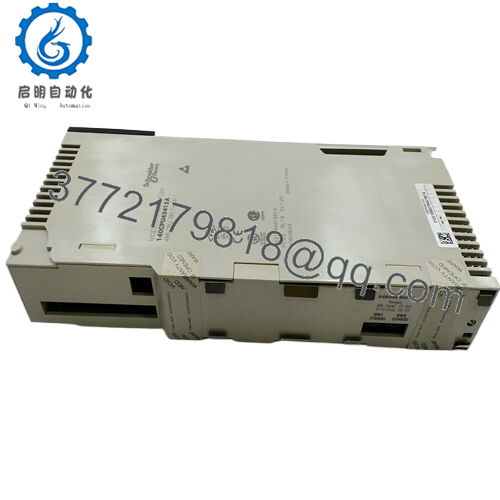
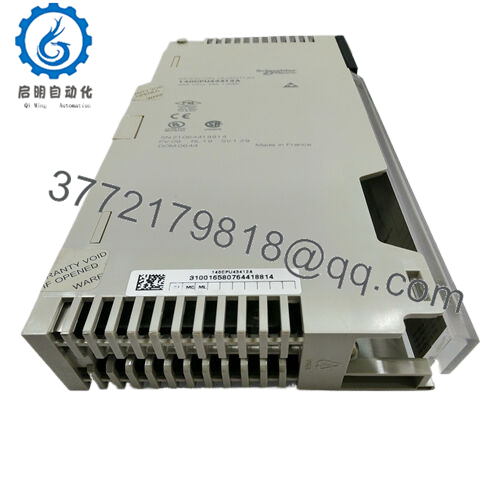
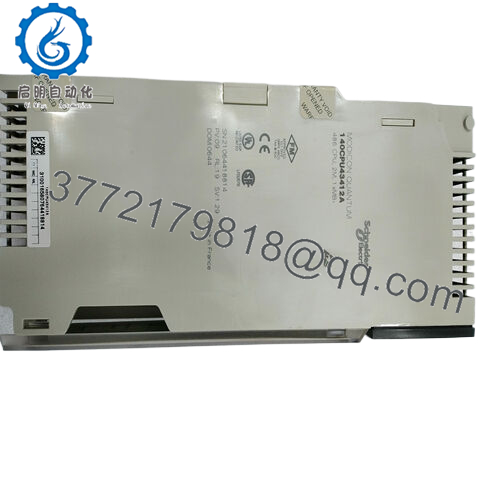
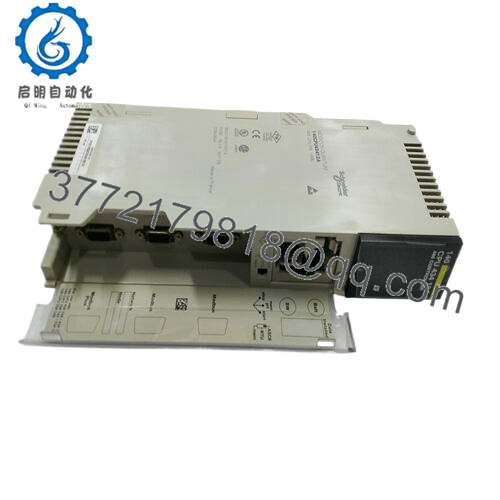
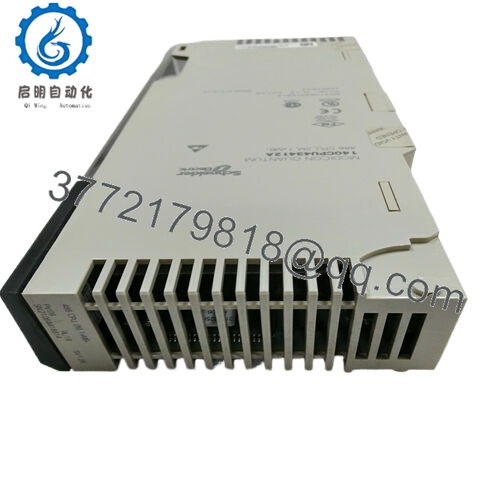
 WhatsApp: +86 16626708626
WhatsApp: +86 16626708626 Email:
Email:  Phone: +86 16626708626
Phone: +86 16626708626


